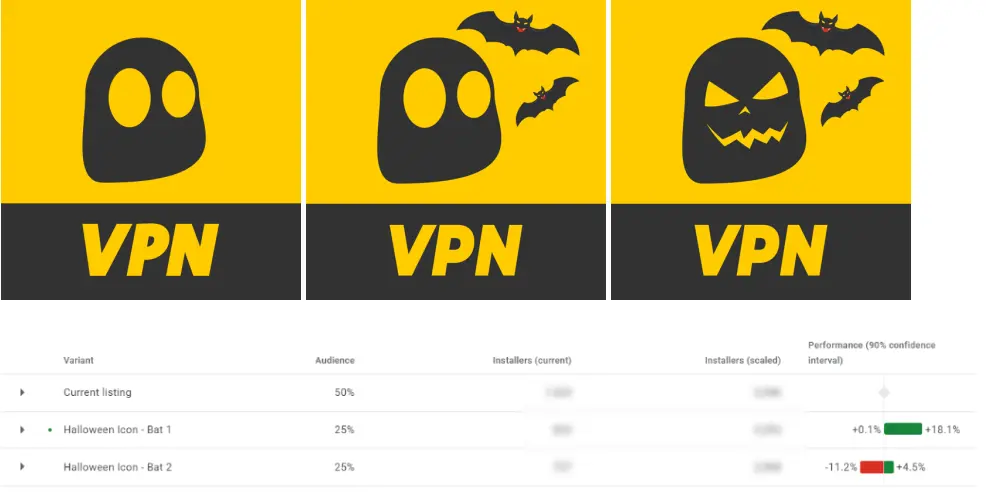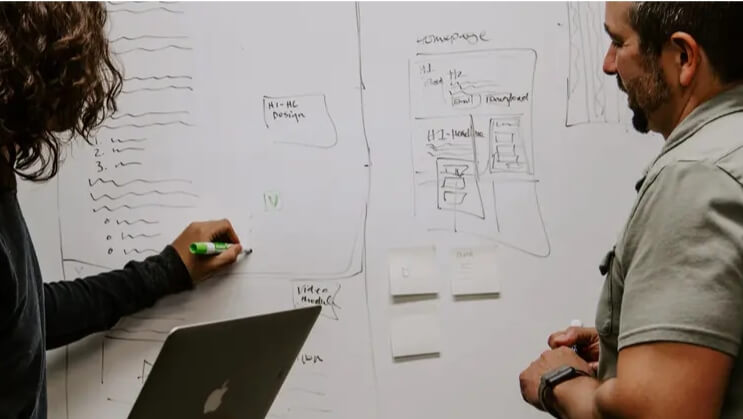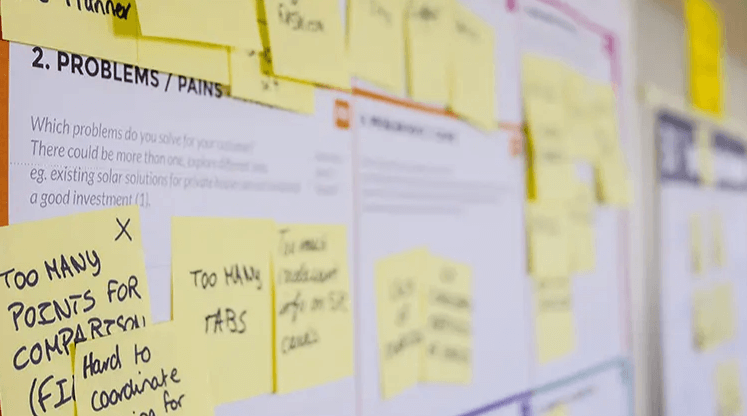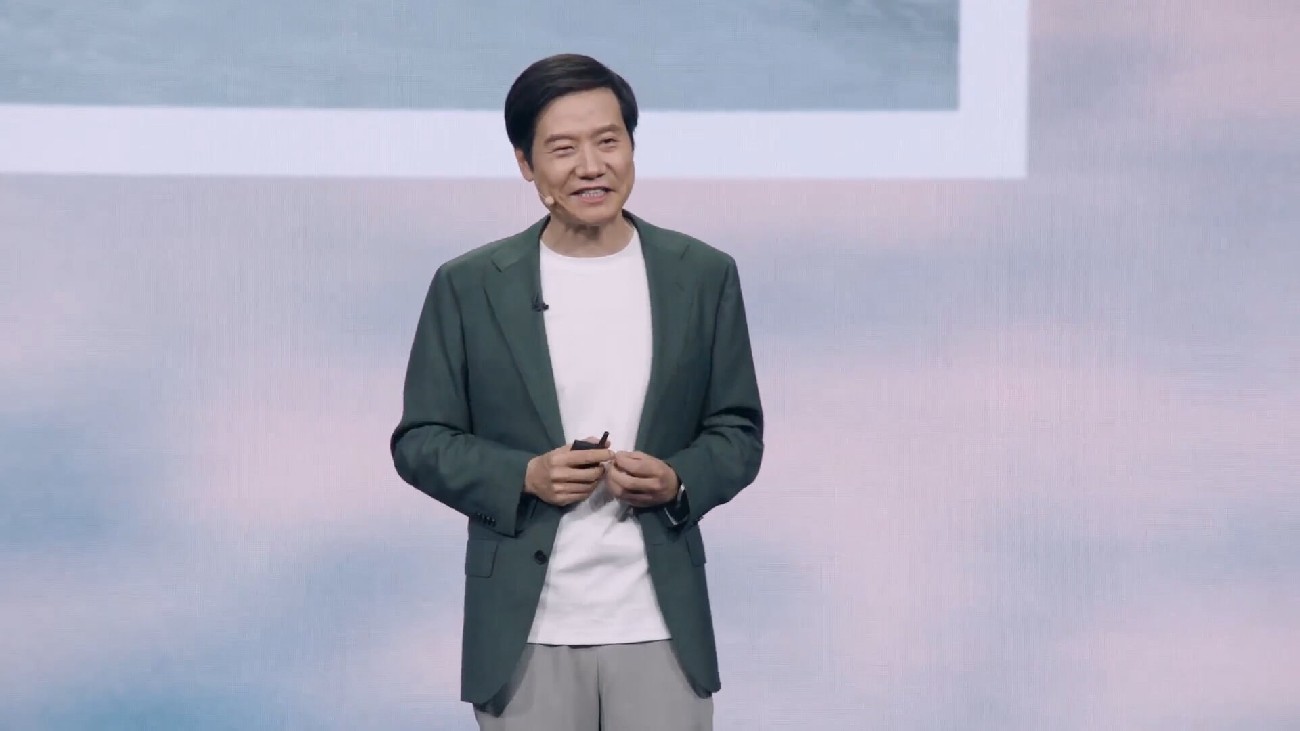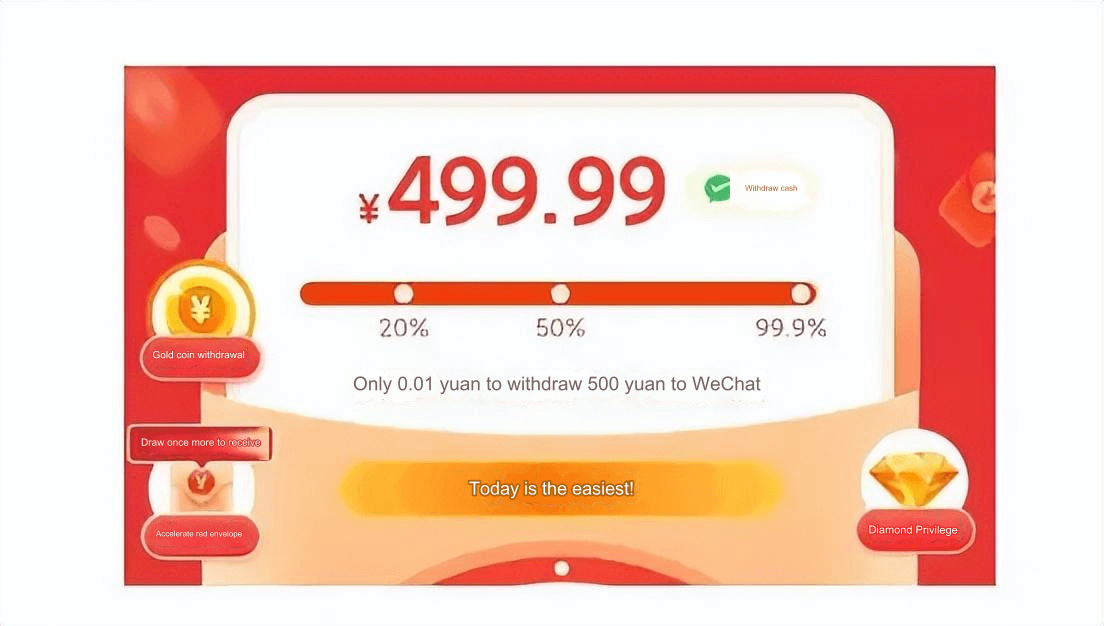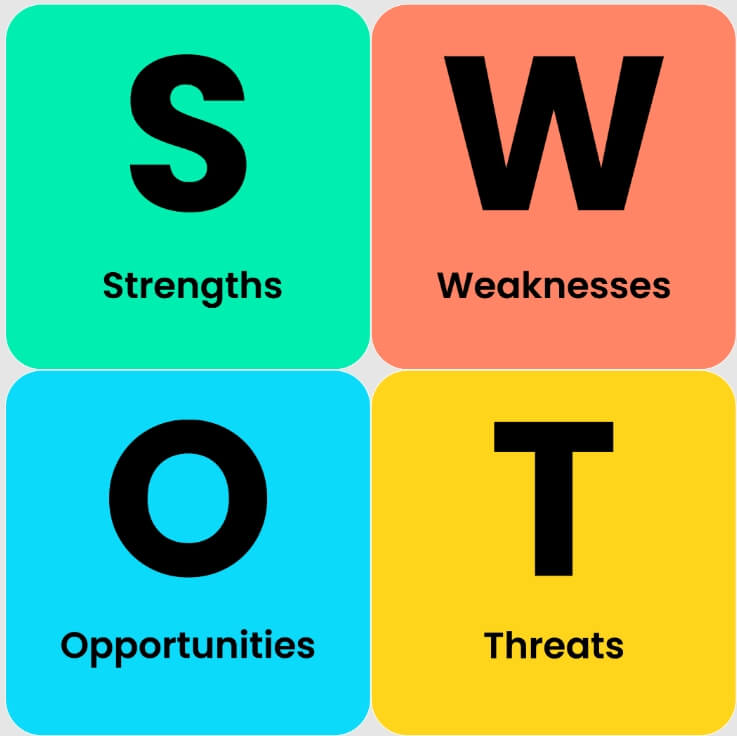We often talk about how to build a good AI product, but we rarely discuss how to become a good AI product manager.
Recently, the popular podcast Lenny Podcast interviewed Aman Khan, the Product Director at Arize AI. Khan, who has worked as a product manager at Apple, Cruise, and Spotify, is now focused on a platform for model capabilities and data monitoring. With his extensive experience, Khan has a lot to say about the role of an AI product manager.

The discussion is highly focused, revolving around how to become an AI product manager, how to stand out among the top 5% of AI product managers, and how to uncover great product ideas.
This article is based on the podcast, with slight additions and deletions by Founder Park.
Some interesting points include:
-
Three Types of AI Product Managers: Platform product managers, AI Native product managers, and AI+ product managers, all of whom share the core goal of solving problems.
-
The First Step to Becoming an AI Product Manager: Build your first product using AI.
-
The Increasing Need for Product Managers in the AI Era: The hardest part of AI is knowing what to do—identifying real opportunities and problems that need solving, and then clearly communicating to AI tools what to do.
-
Don't Follow the Crowd: Just because interfaces like ChatGPT seem intuitive, widely used, and familiar doesn’t mean it’s the right thing for you to build.
-
A Good Product Manager Not Only Creates Value for Customers but Also Makes Room for Their Team: They must constantly experiment, iterate, and accept rapid technological changes.
-
AI Is Not Just About Automation: It’s about making user experiences simpler and lowering the barriers to creation.
-
As an AI PM, Learn to Navigate Uncertainty: Continuously probe and adjust until you feel the product is dragging you forward in the right direction.
1. Three Types of AI Product Managers: But the Core is Solving Problems
Lenny: When we talk about AI product managers, we often hear terms like "AI PM" as if it's a specific certification or training program. Apart from “PMs working in AI,” what is the most common explanation for this role?
Aman Khan: The role of a product manager is to bring together design, engineering, business development, operations, and sales to deliver impactful products. Your responsibility is to represent the customer and find solutions to their problems. Regarding AI, I think there are three types of product managers.
-
AI Platform Product Manager: This is my current role. These PMs mainly build tools for AI engineers. For example, I currently work at Arize, an AI observability and evaluation platform. We have been around for several years, initially focusing on machine learning models like ranking, regression, and classification models. Over time, we expanded to cover a wider array of AI areas.
Now, we’re mainly focused on large language models (LLMs). There are many tools built on APIs provided by OpenAI or Anthropic, or other LLM interfaces. These tools are still clunky, and many features are still in development. After all, the field is still in its early stages. These tools are basic at this point, helping developers understand whether their applications are running as expected.
-
AI Product Manager: These are the PMs working on core AI-driven products, such as ChatGPT, Raiza, or NotebookLM. These products are powered by underlying AI models, which are the “secret sauce.” These PMs need to push research and engineering to develop AI technologies into consumable products for businesses, consumers, or end-users.
-
AI-Enabled Product Manager: This role is about enhancing traditional product management with AI tools to make the work more efficient. As an AI-enabled PM, you don’t need to start from scratch building AI models, but you can leverage existing LLMs or other models to create the best experience for customers. This is how AI can help PMs work more effectively.
As AI technology becomes more widespread, many product managers will shift towards working with AI in some capacity. In the future, AI could become as ubiquitous in SaaS applications as databases are today. So, whether you’re developing AI tools for other PMs or creating cutting-edge AI models, many product managers will eventually move towards one of these AI-related roles.
2. How to Become an AI Product Manager: Build a Product Using AI First
Lenny: When people think about AI product managers, they often envision deeply AI-integrated products. For those who want to transition into this field, what advice would you give about what to learn in order to enter the AI PM role?
Aman Khan: I consider myself a bit of an outsider in this field; I studied mechanical engineering, which has nothing to do with computer science. I learned a lot on my own later. I didn’t take machine learning or AI courses, nor do I have a PhD or Master’s degree. But as you mentioned, there are two types of AI product managers: those who build infrastructure for AI engineers, and those who develop AI-driven products. Regardless of which type, the focus should always be on the end customer. Ultimately, you need to be passionate about solving the problems your customers face.
I remember you said something that really struck me: “If you fall in love with the problem, you’ll push the boundaries of technology to solve it.” For me, I’ve always been fascinated by helping highly technical users like AI engineers or data scientists solve problems I don't think are that difficult—like how to build a dashboard to monitor my model’s performance? This might seem easy at first, but the complexity becomes apparent as you dig deeper. You realize you’re driving technological progress and pushing the field forward to solve your customers’ problems.
AI product management is no different. Your goal is to design the best customer experience and truly solve the customer’s problem. If you love the work, and spend time thinking about what the ideal experience should be, you’ll eventually find tools that help you better understand and solve the problem.
For example, let’s say you're working at a company and your customers are submitting a lot of support requests or complaints. Think about the current customer support experience. Usually, customers have to enter questions into a chatbot, but the bot might misunderstand the issue, or they may have to search through lots of documents to find a solution. If you’re the product manager responsible for this experience, the ideal product experience would be to quickly and efficiently resolve customers' issues, minimizing friction at each step.
Now, with emerging tools like OpenAI’s real-time API, the process could be enhanced. This API is a voice interface that allows real-time conversations with AI-powered voice bots. If you’re a consumer, you can experience this firsthand as a ChatGPT Plus subscriber. The potential of this technology is enormous, and it could inspire you to innovate with AI in your own products.
So, I think this field is driven by curiosity. Your curiosity will lead you in many directions and help you discover tools that solve your problems. Overall, this is an opportunity to explore what drives you and find tools that can help you reach your goals.
Lenny: Digging deeper, for someone wanting to become an AI product manager, what specific skills or technologies should they learn to have a chance to enter this field? Should they specialize in AI technologies, or is the key to being a good product manager still about product management, with AI just being a part of it?
Aman Khan: As you said, the real challenge is figuring out which skills are needed to succeed in this role and how to stand out. I think these are two different things.
First, you need to lay a solid foundation and understand the basic concepts of machine learning and AI. You need to know what is driving the advancements in this technology. Next, based on your interests, continue to dive deeper into this area. So, there are actually two aspects to this: on one hand, you need to know what foundational knowledge is necessary, and on the other hand, you need to figure out how to apply that knowledge to the problems you want to solve or the industries you're interested in.
I think curiosity should be your driving force. For example, you can start with some basic learning resources, like the introductory video on LLMs by Andrej Karpathy, which is about an hour long. After watching it, you'll understand how the technology works and what its limitations are. You could also put the video into NotebookLM, which might give you a more concise version. Another aspect is to try and practice with these tools, to personally explore how to push the boundaries of the technology. Combining these two elements will help you improve your skill level.
In fact, if you look back at the early days, being a product manager didn’t require a specialized degree program, let alone an AI product manager. So, how do you stand out from the competition? You need to show an interest in this field, build a skill set around AI, and learn how to apply this knowledge to the industry you're passionate about. This also answers the second question—how to stand out during the application process. Now is the perfect time to attract the attention of hiring managers by showcasing your portfolio of products you've worked on. Even if these products are just prototypes, showing them can leave a strong impression on hiring managers before the interview.
To summarize a bit, as someone who has participated in hiring AI product managers, the recruitment process really focuses on three things: 1) Can this person do the job I’m hiring for? 2) How passionate are they about our work? 3) Do I enjoy working with them?
So, if you already have a foundation in AI and machine learning, and a product portfolio, you've already answered two of the hiring manager's key questions before the interview. In this way, you actually skip much of the interview process where they assess whether you can handle marketing, engineering, or core product management roles. My advice is to start with the basics, build your skills, let curiosity drive you forward, and ultimately turn these skills into a portfolio that will make you stand out in the job market.
Lenny: I really like what you just said — it’s not that there’s a “shortcut” to becoming an AI product manager, but rather that by building products you’ve worked on, especially those using AI, you can make yourself look extremely valuable. For example, with tools like Cursor, v0, and Replit, you can quickly ideate and create prototypes, or even use tools like Midjourney and DALL-E to sketch and design interfaces. These methods are very practical. So, if you're looking to apply for an AI product manager position but don’t have any products or prototypes you've worked on, it will definitely be harder to compete.
Aman Khan: Actually, it's easier to get into the field of AI product management now than it was before. In the past, you might have needed a stronger background in machine learning to have a chance to work at companies making AI products. These companies needed you to have a deeper understanding of machine learning and models, including how to prepare data, split training data, initiate a project, and deal with the infrastructure involved.
But now, the role of an AI product manager is more about building experiences for or with other AI product teams. For example, there are now many great videos teaching you how to build an application in an hour. I have a little example that’s quite interesting: Once, when I was introducing Replit to a friend, he told me, "I don’t have time to learn new tools; the tech world changes too fast." I thought the best way to show him what’s possible was to directly demonstrate it. So, I opened my phone, went to the Replit website, entered a prompt, and had it generate a website that was immediately accessible. I asked it to create a newsletter sign-up page, and the first version came out quite well, but I wanted it optimized. So, I re-entered the prompt and asked for changes in appearance and color scheme. In less than five minutes, I had a complete sign-up page on my phone. This would have been impossible a year ago.
I think, as technology progresses, things like this will become even simpler. As a product manager, your curiosity will constantly push you to explore new possibilities, and eventually, you will become the person who always finds “cool” new things and brings them back to the company. So, that’s part of the role of a product manager — to keep a genuine curiosity about the field.
Lenny: About a month ago, I had an idea. Now that AI tools are becoming more and more abundant, many people think product managers are less important. Why do we still need product managers? Engineers can use these tools themselves, designers can handle it, and AI can generate everything automatically. So, what role does a product manager have in this scenario?
Later, I realized that it's actually the opposite — it’s precisely because of product managers that you might not need other roles. Think about it: What are the strengths of AI tools? They can help you build things. You tell them what you want, and they can do it. The hardest part is actually knowing what to build, identifying the real opportunities and problems that need solving, and clearly communicating to AI tools what needs to be done. Then, you need to have taste and intuition, to know what makes a good product and what will succeed in the market. Isn’t that the work of a product manager?
So, I’m curious to know what you think. Do you agree with this perspective? Is the product manager role the one most likely to thrive in the AI era?
Aman Khan: I completely agree with this point. I think some executives or company VPs might feel like they need to rush into the AI space, but they often have a tendency to stick to what’s already worked. So, I believe the role of an AI product manager in these companies is actually to represent how to maximize the use of these tools. If you understand what these technologies can do, deeply understand the customer’s problems, and are the person representing the customer’s voice in the company, then you are the ideal person to clarify what should be done and how to do it. This is a very powerful position for the company.
Also, I want to add something about the core product skill you mentioned in the podcast — influence. These AI tools can greatly enhance your influence, allowing you to communicate ideas more effectively with design and engineering teams, and even with upper management. When you can convey ideas to different people, these tools are incredibly powerful. They give AI product managers greater leverage. For me, I completely agree: Being an AI product manager today is the most influential position in a company, especially in this AI era.
Lenny: That’s fantastic, I’m glad we reached a consensus.
What you just mentioned reminds me of a conversation we had before recording about Mihika (a product manager at Figma). Her superpower is being able to do design, engineering, and product management — she’s essentially a one-person powerhouse. That’s also why she has been so successful at Figma, influencing leadership to build products they were originally uncertain about, like “Do we really need to create a Slides product?” Now, nearly everyone can be like Mihika, handling both design and development as a product manager.
3. How to Become in the Top 5%: Don't Do What Everyone Else is Doing
Lenny: What kind of AI product managers can distinguish themselves from ordinary AI product managers and become top 5% in the industry?
Aman Khan: About two years ago, right around this time, ChatGPT launched. Everyone was impressed by it, especially its super simple, intuitive interface and strong model performance. It almost felt like you were having a conversation with a human. Of course, the version back then was much simpler than the current one. If you look back at it now, it’s like looking at the old iPhone. At the time, you’d think, “Wow, this technology is amazing,” but now, using it, you might feel it’s not perfect and many features still need work. Technology is constantly improving, and people’s expectations are rising. However, that moment was definitely an “iPhone moment” for AI products.
Then, many companies began using this technology to try to build AI products. As a result, almost everyone’s first product was just another ChatGPT based on their company data. I’m not sure why, but everyone gravitated toward this direction, and many AI product managers were saying, “We’re building an internal chatbot based on our knowledge base that can answer questions.” But if you look at how these products were used in practice, they might not have performed as well as expected. I think it's worth questioning whether this is the right approach.
To answer the question: To stand out in AI product management and become one of the top 5%, I believe the key is: Don’t do what everyone else is doing. Just because ChatGPT’s interface seems intuitive, people like it, and it’s familiar doesn’t mean that’s what you should build. What you need to think about is: Is this really what we need to do right now? Is this the problem we’re trying to solve? If you think deeper, you’ll realize that the AI interface might look quite different. It might not be the traditional chatbot form; it could be that you're optimizing or accelerating an existing process to help people complete tasks more easily.
Just like us internally, we needed to handle a lot of data to make decisions, so we tried to automate that process. While we did create a small chatbot to understand the technology behind it, we made many other attempts in terms of AI interface design. I believe that many cutting-edge AI products are not entirely like chatbots. So, the real question you need to ask yourself is, What is the best interface for this product?
Lenny: What I’m hearing is that if what your team is working on is very similar to an existing foundational AI model product — for example, products related to AI foundational models — that might be a warning sign. It could indicate that this may not be a big opportunity. So, you should focus on optimizing things that look different and innovative.
Aman Khan: Hmm, I think this is actually a bit like what everyone was doing in the past two years, and now it’s resurfacing again. The key point now is the concept of the "AI Agent." I’ll bring up a point that Yuriy (the growth leader at Grammarly) made — I heard that episode, and it was really insightful. He said that he receives tons of emails every day, and everyone claims to be working on AI, AI Agents, and so on. But in reality, people are often just applying this technology to a problem without actually defining the problem clearly. What they’re talking about is the solution — for example, using an AI Agent to do something.
So, if you really analyze it, you should ask yourself whether it’s really necessary to build an AI Agent within your company, or should those foundational model companies develop this agent layer, and your job is to make sure this experience integrates seamlessly into your existing product so that users don’t even realize it’s AI. I think this is where the real power lies, and where product managers can truly innovate. Honestly, you probably won’t have the capabilities of top-tier researchers to design a new model from scratch, or to create new technology to build the next agent framework. But what you can do is take existing technology and find a way to apply it within your company — and that’s where the AI product manager role stands out.
Lenny: I guess many product leaders hearing this right now are thinking, "Great, I need to have everyone on my team listen to this, because I’m guessing every product manager and every company is looking at these AI ideas and constantly coming up with AI-related concepts. Everyone’s thinking, 'Oh no, we need to do AI.'" So, that’s how we end up with countless AI product ideas. I think this advice is really important, and it's a reminder that we need to focus on solving problems, not just doing AI for the sake of doing AI. AI is just a tool to solve problems, not the goal itself.
Lenny: Well said. So, what’s the difference between an AI PM and a top 5% PM? Do you have any thoughts you can share on that?
Aman Khan: Actually, I want to borrow some advice from our friend Kevin Yien (a product manager at Stripe), who mentioned it on your podcast. I think it really resonated with me personally, and it’s this: “You have to be able to walk and chew gum at the same time.”
As an AI PM, your job isn’t to create AI products, it’s to solve customer problems. I think this core idea is really important, and we keep coming back to it. You’ll constantly be pushed by your team and company to solve a business metric, to drive a KPI. But your real goal is to free up space for other things — like prototyping, personally trying out tools, giving your team time for hackathons, experimenting with tools, and deconstructing products with great user experiences. For example, yesterday, our company did a live deconstruction of NotebookLM. About every one or two weeks, we pick a cutting-edge AI product, host a webinar, and analyze how it works. These three activities won’t directly affect your KPIs or business metrics, but they help us better understand the field.
So, coming back to my earlier point: you have to be able to walk and chew gum at the same time. Not only do you have to keep creating value for customers, but you also need to make space for your team to constantly experiment and iterate. You’ll find that some experiments may not excite users the way you expected, but in the process, you’ll learn a lot. This is also a strong point — to stand out in the AI PM field, you need to embrace the fast pace of technological change. You might think a particular technology will have great results, or that your product experience is subpar. Just like you mentioned earlier, even a great chef occasionally makes a bad meal. AI products are the same; you’ll experience some failures, but the goal is continuous iteration.
That’s the way AI gets better, and the way companies can deploy AI better. So, don’t give up on your initial direction; find a way to make AI scale internally within the company. I think truly outstanding AI PMs can do this.
Lenny: I think the “walking and chewing gum” metaphor doesn’t quite capture the difficulty Kevin was trying to express. When you think about it, walking and chewing gum doesn’t seem that hard. Maybe there’s a more fitting metaphor.
Aman Khan: Yes, I don’t quite understand why that metaphor was used, but it’s always been used to describe doing difficult things — feeling like you can’t possibly do all these things at once.
Lenny: Ha, yeah, let’s not get hung up on the metaphor. Do you think there’s anything else that’s really valuable to share or discuss, particularly about how to become a successful AI product manager, that we haven’t touched on yet?
Aman Khan: One challenge is that the organization might want to do something, but you’re trying to get them to do something else. This is the challenge of the role, because there’s so much hype and excitement around AI, and the key to success is knowing what to build and focusing on the right problems. So, when you bring all these signals together and try to solve customer problems, that’s really what it means to be a successful AI product manager. It’s the hardest part of the job, but it’s also the most important and impactful.
4. How to Come Up with Good Ideas: Focus on User Experience
Lenny: How do you come up with truly interesting and promising AI application ideas within your company? Is it through hackathons? Or do you set certain goals to ensure there’s an AI element to the solution? Do you have any practical methods that can help you find good AI ideas?
Aman Khan: There are actually three methods within the company, and if you start trying them tomorrow, you should see some good ideas emerge.
The first one is about measuring the impact of AI, which you mentioned earlier. I think product managers often focus on metrics. In fact, I believe every AI product manager needs a measurement standard. Every PM in a company has tasks and business metrics to drive, but when it comes to AI prototype development, it seems like there isn’t a clear measurement standard. This is interesting. I’ve talked to many companies and asked them how they measure AI’s impact on the business, and their answer is, “Oh, we don’t expect it to directly bring revenue growth.” So how do you know if what you’re doing is working? I think you need a measurement standard, and that’s looking at how many attempts you’ve made in this area.
This ties into the second point, which is the hackathon approach. I think hackathons are great because they allow everyone to personally experience the technology and remove the “AI is hard to use” feeling. The goal is to get everyone in the company to try it. A lot of times, people are resistant to hackathons, thinking they take up too much time, but you can bring in problems to see if AI can solve them. In the end, you might have 10 problems, 9 of which you try using AI, but none of them work. It’s like AI isn’t as easy to use as you thought, or you want a very specific answer, but AI doesn’t handle it well.
I have an example: A few weeks ago, we did a hackathon internally, and the engineering team came up with various ideas. One idea was to create a Slackbot to help send reminders to on-call staff. We thought this would be simple — if someone in the support channel mentioned an issue, the Slackbot could automatically identify the problem and assign it to the relevant person. We thought this would be a perfect use case for AI — let it analyze the problem and route the information to the right person. But we found out that this was actually a very difficult problem because there was a lot of missing context in the information. For example, this person dealt with this issue two weeks ago, but now they’re working on something else, and another team has taken over that task. So, the key is to identify the right problems to solve. A good intuition is to use hackathons to spot issues and see which ideas succeed and which ones don’t.
Finally, I think the most important thing is to really focus on user experience. You need to identify problems to solve with AI, but you should also look at existing successful AI products and see what they did right. For example, many people try to use AI to fully replace certain tasks. There’s an interesting story about Betty Crocker, who once launched a cake mix that only required water to make a cake. But the product didn’t sell well. Later, they changed it so that you had to add water and eggs, and sales skyrocketed. Why? Because they realized customers wanted to have some control over the process. Think about autonomous driving — even though it’s fully automated, you can still control things like the air conditioning and music settings. Customers still want to have some control over the experience.
This is like the “IKEA effect” in AI products: When users feel they have some influence over the final experience, they become more engaged, instead of everything being fully automated. This is a key insight we’ve gained from successful AI products, and you may find more similar examples in the field.
Lenny: This point is so important. You can build a fully automated product, but it doesn’t necessarily have to be that way. The Betty Crocker example is interesting, and it reminds me of Blue Apron and other meal kit services. A friend recently told me he’s been cooking a lot more, and when I asked how, I found out he’s using Blue Apron. On the surface, it sounds like he’s cooking, and he could say, “I’ve been cooking a lot,” but it doesn’t quite feel the same.
Aman Khan: Exactly! Let’s dive into the Blue Apron example. It’s an interesting point. What does Blue Apron actually do? Are they trying to make people eat, or just fill their stomachs? I don’t think so. If you really wanted to solve the eating problem, you might create something like DoorDash, where you just press a button, and food is delivered. But Blue Apron’s goal is to get people closer to the cooking experience or closer to the feeling of cooking.
I think this is also how great AI products work. AI isn’t just about automating a problem; it’s about making the user experience easier and lowering the barrier to creation. So, the role of AI isn’t to automate everything; it’s to make it easier for users to engage with and create better experiences.
5. A Good Product Manager Must Bring Energy to Drive Projects
Lenny: You’ve consciously chosen to be an individual-contributor (IC) PM rather than moving up to a higher product management role like Director or VP. To succeed long-term as an IC, certain skills and mindsets are needed. Many people either can’t advance or don’t want to, or they’ve never even considered this possibility. So my question is, as an individual contributor, what habits, mindsets, and lessons learned do you think are particularly important for long-term success?
Individual-contributor PM: A PM who does not have team management responsibilities and focuses on individual projects.
Aman Khan: Looking back at my career, a lot of things really depend on your personal drive. I’m particularly obsessed with solving customer problems. To do this, I often spend a lot of time digging into the details and understanding the core of the problem. So I think to be a successful IC PM, there are three main things to pay attention to.
First, I want to set the tone here: becoming an IC PM is really difficult. I’ve mentioned before that if you can use these tools, entering the product manager field becomes easier to some extent, and now you have these tools to build the next prototype. But I think the standards and the impact required from product managers in companies have already risen. So the challenge is, you have a very tough job, the signals are continuous, things are constantly changing, and how do you really stick it out? Therefore, I think there are three things to consider here: energy, waiting and wandering, and amplifying signals to make decisions.
The first is energy. I think this is one of the biggest takeaways from my work with our CEO: when you’re uncertain about which direction to go, energy is really important. If you go into a meeting with more energy and enthusiasm, you’ll find that many obstacles can be easily overcome. On the other hand, if you’re down or uninterested in an idea, everyone will feel it. After all, we’re dealing with people. If you change your mindset and bring a little more energy, you’ll often find that conversations become smoother, feeling more like talking with a friend rather than having a tough discussion. You may also face uncertain situations, feeling like it’s hard to make decisions, like you’re at a bottleneck. This is something everyone encounters, like a product “bottleneck,” not a writing “bottleneck.” You might be waiting for inspiration for the next article, while as a product manager, you’re waiting for an idea or goal to move the project forward.
For example, about a year ago, we had a tough choice: should we invest in LLMs and large language models, or continue focusing on our existing customer base? It was hard to make a clear decision. So, I took some energy and did something — I reached out to everyone on LinkedIn with "AI" in their title and started setting up calls. Through this process, not only did I learn how to better communicate our problems and products, but I also sent a signal to the team: I’m willing to dive into the details with everyone, even while pushing forward existing projects, and willing to get involved in these “side tasks.” I think this kind of leadership attitude is very important. When the team feels uncertain about the direction, as a “player-coach,” you show up with a positive attitude and energy to push things forward, which can significantly improve the overall team efficiency.
So I think, like LeBron James, you’re not just a coach; you also need to personally engage in every difficult challenge. This kind of leadership is something our CEO has taught us. Although it can be tiring, I can feel it, he never shows it in meetings and always brings energy and enthusiasm.
Lenny: I hear two points from you, and they sound great. First, bringing energy to meetings can really create tangible energy. Second, actually doing things, solving problems, such as proactively going into sales, potentially becoming a salesperson, and engaging with customers, doing some of the “dirty work.” Regarding the first point, how can you bring energy? Is it just “being loud” or just appearing energetic?
Aman Khan: I think this really depends on the individual. It’s quite personal. For example, for me, I might come across as excited and bring my own energy to participate, but for others, it might be little things like caring about how others are doing or trying to keep the meeting atmosphere positive. I think the energy that everyone feels can be different. It’s actually related to something I mentioned earlier: humans are really good at picking up subtle signals from others. You need to convey an energy that makes people feel that you’re 100% involved and committed. So I think the key is to make everyone feel that you’re someone who can elevate the energy of the whole team, not bring it down.
Lenny: I once worked with a project manager who really embodied this point. Every time he came into a meeting, he’d bring a problem-solving attitude, super positive and full of energy, and this kind of atmosphere would instantly change the entire vibe of the meeting.
Aman Khan: I remember a small story from Lyft’s early days. I had some early friends at Lyft, and their self-driving car team had a tradition: after every meeting, they would say “make it happen.” It sounds simple, but it’s super powerful — it’s an attitude of “we’re going to get this done.” This even became part of their culture. After a meeting where a decision was made, they would just execute.
This small habit can feedback into the team culture and motivate the team. You actually have the opportunity to shape the culture around you and influence the atmosphere of the team. Especially in the PM role, everyone looks to the PM to make decisions and solve problems. Even with a tough decision, you can influence the energy of the entire team.
Lenny: I totally agree. So, first, your advice is: energy is really important. If things aren’t going well, bring energy to push the team forward. It’s not just about keeping everyone positive in meetings; it’s also about doing the work yourself, finding the core of the problem, and the team will see the time and effort you invest, which will help solve the problem.
Aman Khan: Yes, and to expand on the second point, I think a very important point is that when you work alongside others, you develop more empathy for their work. They will tell you what difficulties and challenges they face.
In many teams, I’ve found a common consensus: no job is unimportant. So, as a PM, if you work with someone to solve a problem, you’re actually learning their job, understanding their challenges, and at the same time, you’re helping to push the whole team forward.
6. Learn to “Wander” in Uncertainty
Lenny: Let’s continue discussing some other experiences you’ve found helpful in the IC PM role. You mentioned the concepts of "waiting" and "wandering," perhaps we can dive into that.
Aman Khan: Actually, the concept of "waiting" and "wandering" is incredibly powerful. I feel it resonates with me, especially when I don’t know what the next step should be. We’ve talked about energy and how to bring energy, but that doesn’t solve the problem of what we should actually do. As a PM, your job is to figure out where things are headed, which problems need solving, and how to truly solve them for customers.
So, you have to occasionally take a “zoom-out” approach, as if you’re at a campsite, and need to decide who should lead the team forward. In many companies, especially large ones, there’s often a tendency to do familiar things, or just wait and see. In the AI field, this thinking becomes: "Should we wait and see how things develop, or should we take the lead and guide the team?" Many companies choose to wait, to see if new technologies or models emerge before making decisions.
For example, right now, everyone’s saying, "Let’s wait for the next version of OpenAI and see what product we should build," I’ve heard similar statements many times. But I think waiting is sometimes reasonable, especially in the early stages when the technology hasn’t fully developed. But there's also an important element of "wandering," where you actively seek direction, think about how to move forward. To me, the PM role is about being that "wanderer."
I remember a conversation I had with an engineering manager at the company while we were drinking beer. He said that sometimes he feels like he’s not putting 100% energy into his work, especially when things are uncertain towards the end of a project, and he doesn’t know what direction to take. When I heard his perspective, I found it interesting. From his point of view, the team’s situation was pretty good, morale was high, and the plans were all clear. But from a product perspective, we were still unclear about what to do next. As a PM, you bear the responsibility of helping the team find direction, and this process isn’t easy—it often feels like groping through the fog.
At that time, while I was discussing this with our company’s founder, Aparna (our Chief Product Officer) told me: "This is the process of going from zero to one. Sometimes, you really don’t know what the next step should be, but you know you’ll eventually find the right direction." So, as a PM, you need to learn to "wander" through uncertainty—testing and adjusting continuously until you feel that the product is "dragging" you in a particular direction. So, the key is to embrace this uncertain state, to "wander," rather than just "wait." While others may still be waiting to see how things develop, you, as the PM, may need to take the initiative to explore and guide the team.
Lenny: The takeaway for me is that if you don’t know what’s next for the product, that’s okay. In fact, through continuous trial and error, you’ll eventually find your way. And, using AI tools to simplify prototyping and the creative process theoretically reduces your stress, since you can try out different options.
Aman Khan: I think AI is like amplifying signals through noise. Sometimes signals are scarce, and the information you can gather is limited. But you can use powerful tools like Gong to analyze what potential customers or engineers are saying, to identify where their pain points are. I can’t attend 100 meetings a week, but I can put the meeting notes into a tool, like we do, and input these records into language models that can process large chunks of text. This way, you can identify the most frequent issues. Having discussions around these issues becomes much more effective.
Now, you can even use voice to process this information and integrate everything. You could even create a part of it in NotebookLM. The key is finding ways to extract signals from the noise. It’s like giving yourself a "superpower" because you can focus on multiple things at once and leverage technology to help you find valuable information. So, I’d recommend people use AI to enhance themselves and capture those signals.
7. Enjoy the Process, It Will Take You Further
Lenny: Do you have any other experiences of success that you’d like to share?
Aman Khan: Being a product manager can sometimes feel overwhelming, as the decisions you make can have significant consequences. But I actually remember discussing this with a board member, who is an entrepreneur and has taken companies public. I asked him for advice as an early-stage product manager. His feedback surprised me. He said, "Enjoy the process." I actually believe that if you maintain curiosity, keep learning, and build products for customers you truly care about, that drive will take you further.
Personally, I also think that staying high-energy is much more enjoyable. When you genuinely care about what you’re doing, it’s much more motivating. If you keep learning and enjoying the process, your iteration speed will be faster. So, my advice is to enjoy the process—truly enjoy the journey. Even when you’re uncertain, enjoy the process.
Lenny: I love what you just said, I completely resonate with that!
Recently, I also heard another piece of advice about public speaking, which is related to "enjoying" the process: it’s from a course called "Ultraspeaking," and one key point is that speeches should be fun. Even if you feel nervous, think about how to make it fun. This approach is really effective.
Aman Khan: That’s more interesting than having no fun at all.
Lenny: Even facing pressure and fear, thinking from a different perspective—how can you make it fun? Most of the time, things won’t reach the point of "the end of the world," and even my career won’t end because of it. So, try to enjoy the process.
Aman Khan: I completely agree.
Lenny: Let’s move on to the quick-fire round. First question, what are two or three books you recommend most?
Aman Khan: I really like Bill Bryson’s A Short History of Nearly Everything. It’s fascinating because I’ve always been interested in science and used to read a lot of novels as a child. The book covers the history of science, especially how we came to know what we know. For example, you’ll learn that Newton wasn’t particularly friendly with his colleagues or that Darwin wasn’t well-received at the time. Many scientific discoveries weren’t immediately recognized, and it often took years for people to realize their significance. This book also helped me better understand the scale of the universe and human history.
I think it helps you rethink time and space, especially now, in the AI era, when everything seems insignificant. The stories of the scientists in the book are also quite interesting, so I recommend this book to almost everyone because it’s easy to read.
Another book is Designing Your Life, written by one of the founders of IDEO U and professors from the Stanford Design Lab. It’s very practical, with a lot of exercises that help you clarify your life’s direction. One exercise I did was writing an essay on the meaning of work and another on the meaning of life, then finding the intersection between them. This exercise really helped me realize what my goals are, and it’s especially useful for people feeling lost in their careers. In short, these two books help you look at life from different perspectives.
Lenny: Have you discovered any new products recently that you particularly like? They can be AI-related or not.
Aman Khan: We’ve already talked about some AI products, like Replit and v0, those amazing prototyping tools. I think they’re ultimately going to create some really polished products. But recently, I’ve been really enjoying a product called Websim. What’s special about this tool is that it allows you to make prototypes in a really fun way, even with ideas you might never have thought of before. It’s hard to describe in words, but I remember seeing a demo from the Websim founder at an AI conference. They went on Reddit, checked out the Websim subreddit, randomly picked some posts, and discussed what people were talking about, then tried to visualize those ideas. I’ve been really obsessed with it lately because it pushes you to break the mold and try things you thought were impossible.
Another product is a notebook. I’m a bit old-fashioned, I still prefer to write things down on paper. I’m always looking for the best notebook, and recently at an AI event, someone gave me a notebook. It’s made from recycled apples, and when you open it, it actually smells like apples! I was really surprised because I didn’t think it would have much of an impact on me, but that smell really gives me a positive feeling every time I open it. It’s like an immediate sensory experience that lifts my mood, and it makes me really enjoy using it. I don’t know if I’ll buy another one after I finish this one, but for now, I really like it. That little smell makes it especially interesting.
Lenny: Do you have any life mottos you use to motivate yourself or find particularly useful in work and life?
Aman Khan: Yes. One quote from Steve Jobs has always inspired me: “Your time is limited, so don’t waste it living someone else’s life.” This really struck me because often we feel career pressure and think we need to quickly find the next job or start something crazy. But I believe what’s truly powerful is being able to reassess what kind of life you actually want, rather than just conforming to other people’s expectations of your life. So I keep this quote in mind, and whenever I feel lost, I ask myself: what kind of life do I want to live? When making decisions, it’s best to think based on that.
